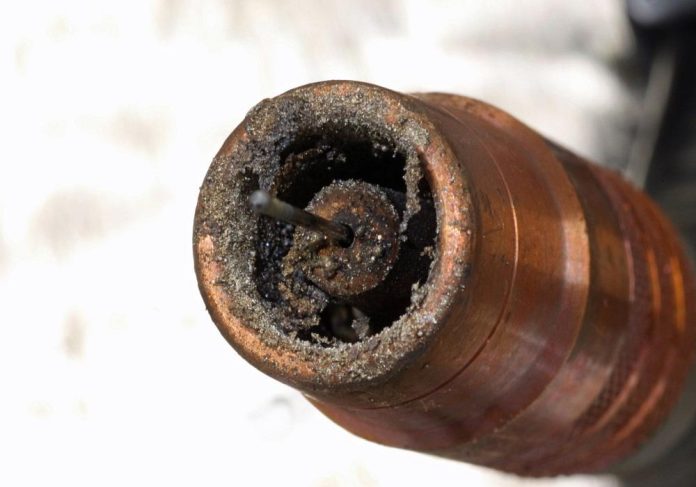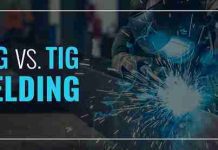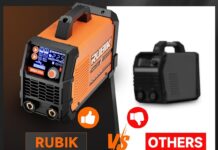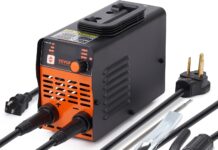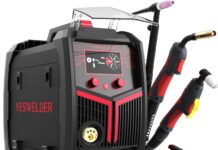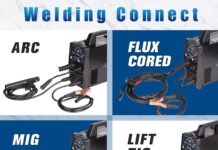Have you ever wondered how frequently you should replace MIG welding nozzles? In the world of welding, this is a common question that many artisans and professionals ponder. As avid users of MIG welding, we understand the importance of maintaining equipment and ensuring optimal performance. In this article, we will explore the factors determining the lifespan of MIG welding nozzles and provide practical insights on when it’s time for a replacement. So, if you’re ready to learn how to keep your welding game strong, read on!
Factors That Affect Nozzle Lifespan
Quality of Materials Used
The quality of materials used in manufacturing MIG welding nozzles plays a significant role in determining their lifespan. Nozzles made from high-quality materials are more durable and resistant to wear and tear, resulting in a longer lifespan. Choosing nozzles made from materials such as copper or brass is essential, as they offer excellent heat conductivity and are less prone to damage.
Type of Welding Application
The type of welding application being performed also affects the lifespan of MIG welding nozzles. Different applications involve varying intensity and exposure to heat, sparks, and spatter. Heavy-duty welding applications, such as those involving thick metals or continuous long runs, wear out nozzles faster than lighter welding tasks.
Frequency of Use
The frequency of use directly impacts the lifespan of MIG welding nozzles. Nozzles used frequently, especially in continuous or high-volume welding operations, experience more wear and tear due to prolonged exposure to heat and spatter. Regularly replacing nozzles in high-frequency welding operations is crucial to maintain optimal performance and ensure safety.
Welding Parameters
The welding parameters set during the welding process can also affect the lifespan of MIG welding nozzles. Factors such as wire feed speed, voltage, and shielding gas flow rate should be adjusted appropriately to achieve the desired weld quality. Incorrect parameter settings can lead to excessive spatter and erratic gas flow, leading to accelerated nozzle wear.
Signs of Nozzle Wear
Excessive Spatter
One of the most visible signs of nozzle wear is excessive spatter during the welding process. When the nozzle becomes worn, it fails to provide proper shielding gas coverage, leading to increased spatter. Excessive spatter affects the weld quality and increases the risk of defects and the need for additional cleaning.
Irregular Gas Flow
Another indication of nozzle wear is irregular gas flow during welding. When the nozzle’s orifice becomes worn or distorted, it can disrupt the smooth flow of shielding gas. Inconsistent gas flow can lead to variations in the weld pool protection, resulting in poor weld quality and reduced overall performance.
Poor Weld Quality
Nozzle wear can significantly impact the quality of the weld itself. As the nozzle wears out, it becomes less efficient in providing the necessary gas coverage and shielding, leading to porosity, lack of fusion, and other weld defects. Poor weld quality not only compromises the structural integrity of the joint but also increases the chances of failure or rework.
Difficulty in Cleaning
Worn-out nozzles often become more challenging to clean compared to new ones. The accumulation of spatter and debris on the inner and outer surfaces of the nozzle can hinder effective cleaning. Cleaning difficulties affect the nozzle’s performance and increase the risk of cross-contamination and potential damage during the cleaning process.
Recommended Replacement Intervals
Manufacturer’s Guidelines
Following the manufacturer’s guidelines and recommendations for replacing MIG welding nozzles is advisable. Manufacturers typically provide specific instructions on their products’ expected lifespan and replacement intervals. Adhering to these guidelines ensures optimal performance, extends the lifespan of other consumables, and maintains the integrity of the welding process.
Visual Inspection
Regular visual inspections are essential to determine the condition of MIG welding nozzles and ascertain the need for replacement. Inspecting the nozzle’s orifice and inner and outer surfaces for signs of wear, deformation, or excessive spatter buildup can help identify potential issues early on. If any signs of wear or deterioration are noticed, it is recommended to replace the nozzle promptly.
Performance Testing
Performance testing involves assessing the weld quality and overall performance of the nozzle. By conducting test welds at regular intervals, welders can evaluate the nozzle’s functionality and identify any deviations or deterioration in performance. During performance testing, poor weld quality, excessive spatter, or inconsistent gas flow may indicate the need for immediate nozzle replacement.
Extending Nozzle Lifespan
Proper Nozzle Maintenance
Proper maintenance is crucial for extending the lifespan of MIG welding nozzles. Regular cleaning of the nozzle after use helps remove spatter and debris that can accumulate and affect performance. Additionally, inspecting and replacing worn O-rings or seals can prevent leaks and ensure optimal gas flow. Implementing a maintenance schedule and adhering to proper cleaning techniques will help maximize nozzle lifespan.
Fixture and Spatter Shields
Using fixture and spatter shields can significantly improve nozzle lifespan. Fixture shields are designed to protect the nozzle from direct contact with the workpiece, reducing the risk of damage from sparks or spatter. On the other hand, Spatter shields help minimize spatter accumulation on the nozzle, preventing premature wear. Incorporating these shields into the welding setup can extend the lifespan of MIG welding nozzles.
Air and Gas Quality Control
Maintaining proper air and gas quality is essential for prolonging the lifespan of MIG welding nozzles. Contaminants in the air or gas supply, such as oil, moisture, or particles, can cause internal or external nozzle corrosion and compromise performance. Regularly checking and cleaning filters, using appropriate gas regulators, and ensuring a clean air and gas supply will help preserve the nozzle lifespan.
Optimization of Welding Parameters
Proper optimization of welding parameters is vital for maximizing nozzle lifespan. Setting the correct wire feed speed, voltage, and gas flow rate helps minimize unnecessary stress on the nozzle. Fine-tuning these parameters ensures adequate shielding gas coverage and reduces the chances of excessive spatter or porosity, contributing to prolonged nozzle life.
Importance of Regular Replacement
Prevention of Weld Defects
Regularly replacing MIG welding nozzles is essential for preventing weld defects. Worn-out nozzles fail to provide adequate shielding, leading to defects such as porosity, lack of fusion, or undercutting. By replacing nozzles at the recommended intervals, welders can ensure consistent gas coverage and reduce the risk of costly defects or rework.
Ensuring Reliable Weld Quality
Replacing nozzles regularly is crucial for maintaining reliable weld quality. As nozzles wear out, they become less efficient in providing proper gas coverage, resulting in inconsistent weld quality. By replacing worn nozzles, welders can ensure consistent and high-quality welds, enhancing the overall performance and reliability of the welding process.
Enhanced Welding Performance
Regular nozzle replacement contributes to enhanced welding performance. A worn nozzle can lead to increased spatter, irregular gas flow, and poor weld quality, hampering the welding process’s speed and efficiency. By replacing nozzles at the recommended intervals, welders can maintain optimal performance, increasing productivity and achieving better results.
Safety Considerations
Regular nozzle replacement is also critical from a safety standpoint. Worn-out nozzles may fail to provide adequate gas coverage, leading to increased exposure to harmful fumes, sparks, and UV radiation. Additionally, compromised weld quality due to nozzle wear can jeopardize the structural integrity of welded components, posing potential safety risks. By replacing nozzles as needed, welders prioritize safety in the workplace.
Factors to Consider in Choosing Nozzles
Compatibility with Welding Wire
When choosing MIG welding nozzles, compatibility with the welding wire is crucial. Nozzles should be designed to accommodate the wire size and type used. The appropriate nozzle ensures proper wire feeding and gas coverage, producing high-quality welds.
Gas Coverage Requirements
Gas coverage requirements vary depending on the welding application and the welded metals. Nozzles with different gas flow characteristics and shielding capabilities are available to suit various gas coverage needs. Considering the required gas coverage specifications ensures optimal weld quality and is critical in selecting the proper nozzle.
Type and Thickness of Base Metal
The type and thickness of the base metal being welded are essential factors when choosing MIG welding nozzles. Different metals have varying heat conductivity and welding characteristics, which can affect nozzle wear. Additionally, thicker metals may require nozzles with larger orifices to allow for proper gas flow and coverage.
Welding Positions
The welding position, whether flat, horizontal, vertical, or overhead, also influences nozzle selection. Different nozzle designs accommodate each welding position and provide optimal gas flow. Choosing the correct nozzle for the desired welding position ensures adequate gas coverage and enhances weld quality.
Common Mistakes to Avoid
Delaying Replacement Too Long
One common mistake is delaying nozzle replacement beyond the recommended lifespan. Continued use of worn-out nozzles can result in poor weld quality, increased weld defects, and compromised safety. It is essential to adhere to replacement intervals to ensure consistent performance and avoid unnecessary expenses.
Using Nozzles Beyond the Recommended Lifespan
Using nozzles beyond the recommended lifespan can lead to significant performance issues. Worn-out nozzles are prone to erratic gas flow, excessive spatter, and poor weld quality. It is essential to replace nozzles promptly to maintain optimal performance and achieve reliable weld results.
Incorrect Installation
Improper installation of MIG welding nozzles is another common mistake to avoid. Incorrect installation can result in gas leaks, poor gas coverage, and compromised weld quality. Following the manufacturer’s guidelines and ensuring proper alignment and tightening of the nozzle is crucial for optimal performance.
Neglecting Nozzle Maintenance
Neglecting regular nozzle maintenance is a mistake that can significantly shorten the nozzle lifespan. After each use, failure to clean the nozzle or overlook worn O-rings and seals can lead to gas leaks, decreased shielding gas coverage, and accelerated wear. Implementing a maintenance routine and being proactive in nozzle care is essential for maximizing nozzle lifespan.
Conclusion
The lifespan of MIG welding nozzles can be influenced by various factors, including the quality of materials used, the type of welding application, frequency of use, and welding parameters. Recognizing the signs of nozzle wear, such as excessive spatter and irregular gas flow, is essential in determining the need for replacement.
Following recommended replacement intervals and implementing proper nozzle maintenance practices can extend their lifespan. Regular replacement of nozzles is crucial to prevent weld defects, ensure reliable weld quality, enhance welding performance, and prioritize safety. When choosing nozzles, factors like compatibility with welding wire, gas coverage requirements, base metal type and thickness, and welding positions should be considered.
Avoiding common mistakes such as delaying replacement, using nozzles beyond their recommended lifespan, incorrect installation, and neglecting maintenance will help maximize nozzle lifespan. By understanding these factors and considerations, welders can make informed decisions to maximize the lifespan of MIG welding nozzles.


